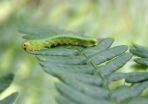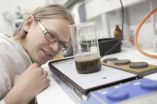(Press-News.org) TORONTO, Nov. 21, 2012-- New research has found there are several different ways that kidney tumours can achieve the same result – namely, grow.
Scientists have been trying to figure out how different people have kidney tumours with the same histology, or shape, although the genetic changes can vary among individual tumours.
Solving that puzzle could have implications for the diagnosis and treatment if kidney cancer, which has 35 per cent mortality rate and is becoming more common. Despite advances in early detection and treatment, the mortality rate hasn't changed in decades.
For the first time, researchers at St. Michael's Hospital have looked at multiple different levels of changes at the same time. Dr. George Yousef, a laboratory pathologist, said researchers have looked at three different ways cancer cells can grow and survive:
• the tumour can amplify (or replicate) its chromosomes, the packages of DNA and proteins found in cells
• the tumour can alter a process that controls the on-off switch for genes needed for cell growth and differentiation, known as methylation
• or the tumour can drive gene activation through another gene
Dr. Yousef said they found that looking at all these changes in the same setting simultaneously can provide a much better understanding of tumour behaviour and how the apparently different changes can produce the same results.
His research appears in the journal Cancer Research, one of the leading journals of in the field of cancer.
Using a high resolution microarray there were also able to identify very specific regions of the chromosomes where genetic alterations happen in kidney cancer to a much higher resolution than before. Combining information from chromosomal changes, methylation and gene expression provided a much clearer understanding of the mechanism of kidney cancer development.
"Now we look at the mechanism rather than the individual change," Dr. Yousef said. "Regardless of the apparent differences of the tumour, the outcome will be the same. Eventually, we may be able to target treatment based on the 'mechanism' that is affected rather than the individual genes that are changed."
###
About St. Michael's Hospital
St. Michael's Hospital provides compassionate care to all who enter its doors. The hospital also provides outstanding medical education to future health care professionals in more than 23 academic disciplines. Critical care and trauma, heart disease, neurosurgery, diabetes, cancer care, and care of the homeless are among the Hospital's recognized areas of expertise. Through the Keenan Research Centre and the Li Ka Shing International Healthcare Education Center, which make up the Li Ka Shing Knowledge Institute, research and education at St. Michael's Hospital are recognized and make an impact around the world. Founded in 1892, the hospital is fully affiliated with the University of Toronto.
For more information or to interview Dr.Yousef, please contact:
Leslie Shepherd
Manager, Media Strategy
Inspired Care. Inspiring Science.
Kidney tumors have a mind of their own
Kidney tumors may be smarter than we thought
2012-11-21
ELSE PRESS RELEASES FROM THIS DATE:
The most popular TV series among youngsters in Spain recreates violence
2012-11-21
Published in the Comunicación journal, a study conducted by the University of Seville analyses violence content in Spanish TV series. It concludes that Telecinco's Sin tetas no hay paraíso is the most violent of the five studied.
Despite the fact that other series have more scenes or minutes of violence, according to the study, the Telecinco series is more powerful in its transmission of values that are more detrimental to youngsters in terms of their perception of aggressive behaviour and its consequences.
Sara González, the author of the study, explains to SINC ...
Flower power to purge poison and produce platinum
2012-11-21
A consortium of researchers led by WMG at the University of Warwick are to embark on a £3 million research programme called "Cleaning Land for Wealth" (CL4W), that will use a common class of flower to restore poisoned soils while at the same time producing perfectly sized and shaped nano sized platinum and arsenic nanoparticles for use in catalytic convertors, cancer treatments and a range of other applications.
A "Sandpit" exercise organised by the Engineering and Physical Sciences Research Council (EPSRC) allowed researchers from WMG (Warwick Manufacturing group) at ...
Researchers detail the migrations of the wood wasp Sirex noctilio
2012-11-21
In order to find out about its migrations, various research centres in South Africa, Sweden, Canada, Chile, Australia, Spain, Argentina and Switzerland have conducted research detailing its routes and expansion periods. A significant new fact has emerged and it is that the wasps returning to Europe from Chile and South Africa have undergone a genetic micro-evolution which makes them more resistant to their natural European enemy, a nematode that sterilises them.
The Sirex noctilio wasp is regarded as a secondary pest in Europe because in this geographical area there is ...
VTT: Indicators and methods of sustainable development 1-sided
2012-11-21
"Methods are required that take the social and environmental impacts of business operations better into account, both within the company and among its network of partners and stakeholders," says Uusitalo. "If a change cannot be effected, the current unsustainable way of life will continue, and we might also miss some opportunities for creating new business. Market share is at stake here."
According to Uusitalo, other companies and customers demand that companies take a wider view of sustainable development.
"Legislation will also inevitably lead development in this ...
Herbivore defense in ferns
2012-11-21
This press release is available in German.
They dominated the earth for 200 million years and numerous different species can still be found all over the world: mosses, horsetails and ferns. Researchers from the Max Planck Institute for Chemical Ecology in Jena, Germany, have now found out that bracken ferns (Pteridium aquilinum) do not release any volatiles when they are attacked − unlike many of the now dominant and evolutionary younger flowering plants. Such an emission of volatile compounds may attract the pest insects' enemies, such as ichneumon wasps or ...
Researchers identify a simple way to precipitate phosphorus from the wastewater of a pulp mill
2012-11-21
Researchers at Aalto University have developed a simple method for reducing the amount of phosphorus in the wastewater of a pulp mill. The method is called simultaneous precipitation using iron sulphate. A separate treatment stage is not required, as the precipitation takes place simultaneously with the actual biological wastewater treatment.
Iron sulphate is added to the wastewater prior to the biological wastewater treatment process, and the phosphorus dissolved into the water is precipitated with the biomass at the treatment plant. Finally, the phosphorus is removed ...
'Trust' provides answer to handaxe enigma
2012-11-21
Trust rather than lust is at the heart of the attention to detail and finely made form of handaxes from around 1.7 million years ago, according to a University of York researcher.
Dr Penny Spikins, from the Department of Archaeology, suggests a desire to prove their trustworthiness, rather than a need to demonstrate their physical fitness as a mate, was the driving force behind the fine crafting of handaxes by Homo erectus/ergaster in the Lower Palaeolithic period.
Dr Spikins said: "We sometimes imagine that early humans were self-centred, and if emotional at all, that ...
Ocean currents play a role in predicting extent of Arctic sea ice
2012-11-21
CAMBRIDGE, MA -- Each winter, wide swaths of the Arctic Ocean freeze to form sheets of sea ice that spread over millions of square miles. This ice acts as a massive sun visor for the Earth, reflecting solar radiation and shielding the planet from excessive warming.
The Arctic ice cover reaches its peak each year in mid-March, before shrinking with warmer spring temperatures. But over the last three decades, this winter ice cap has shrunk: Its annual maximum reached record lows, according to satellite observations, in 2007 and again in 2011.
Understanding the processes ...
Daily steps add up for midlife women's health
2012-11-21
CLEVELAND, Ohio (November 21, 2012)—Moving 6,000 or more steps a day—no matter how—adds up to a healthier life for midlife women. That level of physical activity decreases the risk of diabetes and metabolic syndrome (a diabetes precursor and a risk for cardiovascular disease), showed a study published online this month in Menopause, the journal of the North American Menopause Society.
Although other studies have shown the value of structured exercise in lowering health risks such as diabetes, high blood pressure, and heart disease, this study has shown that habitual physical ...
Brainy babies – Research explores infants' skills and abilities
2012-11-21
Infants seem to develop at an astoundingly rapid pace, learning new things and acquiring new skills every day. And research suggests that the abilities that infants demonstrate early on can shape the development of skills later in life, in childhood and beyond.
Read about the latest research on infant development published in the November 2012 issue of Psychological Science, a journal of the Association for Psychological Science.
How Do You Learn to Walk? Thousands of Steps and Dozens of Falls per Day
How do babies learn to walk? In this study, psychological scientist ...
LAST 30 PRESS RELEASES:
This new understanding of T cell receptors may improve cancer immunotherapies
A new fossil face sheds light on early migrations of ancient human ancestor
A new immunotherapy approach could work for many types of cancer
A new way to diagnose deadly lung infections and save lives
40 percent of MRI signals do not correspond to actual brain activity
How brain-inspired algorithms could drive down AI energy costs
Gum disease may be linked to plaque buildup in arteries, higher risk of major CVD events
Contrails are a major driver of aviation’s climate impact
Structure of dopamine-releasing neurons relates to the type of circuits they form for smell-processing
Reducing social isolation protects the brain in later life
Keeping the heart healthy increases longevity even after cancer
Young adults commonly mix cannabis with nicotine and tobacco
Comprehensive review illuminates tau protein's dual nature in brain health, disease, and emerging psychiatric connections
Book prepares K-12 leaders for the next public health crisis
Storms in the Southern Ocean mitigates global warming
Seals on the move: Research reveals key data for offshore development and international ecology
Sports injuries sustained during your period might be more severe
World's first successful 2 Tbit/s free-space optical communication using small optical terminals mountable on satellites and HAPS
Can intimate relationships affect your heart? New study says ‘yes’
Scalable and healable gradient textiles for multi‑scenario radiative cooling via bicomponent blow spinning
Research shows informed traders never let a good climate crisis go to waste
Intelligent XGBoost framework enhances asphalt pavement skid resistance assessment
Dual-function biomaterials for postoperative osteosarcoma: Tumor suppression and bone regeneration
New framework reveals where transport emissions concentrate in Singapore
NTP-enhanced lattice oxygen activation in Ce-Co catalysts for low-temperature soot combustion
Synergistic interface engineering in Cu-Zn-Ce catalysts for efficient CO2 hydrogenation to methanol
COVID-19 leaves a lasting mark on the human brain
Scientists use ultrasound to soften and treat cancer tumors without damaging healthy tissue
Community swimming program for Black youth boosts skills, sense of belonging, study finds
Specific depressive symptoms in midlife linked to increased dementia risk
[Press-News.org] Kidney tumors have a mind of their ownKidney tumors may be smarter than we thought


